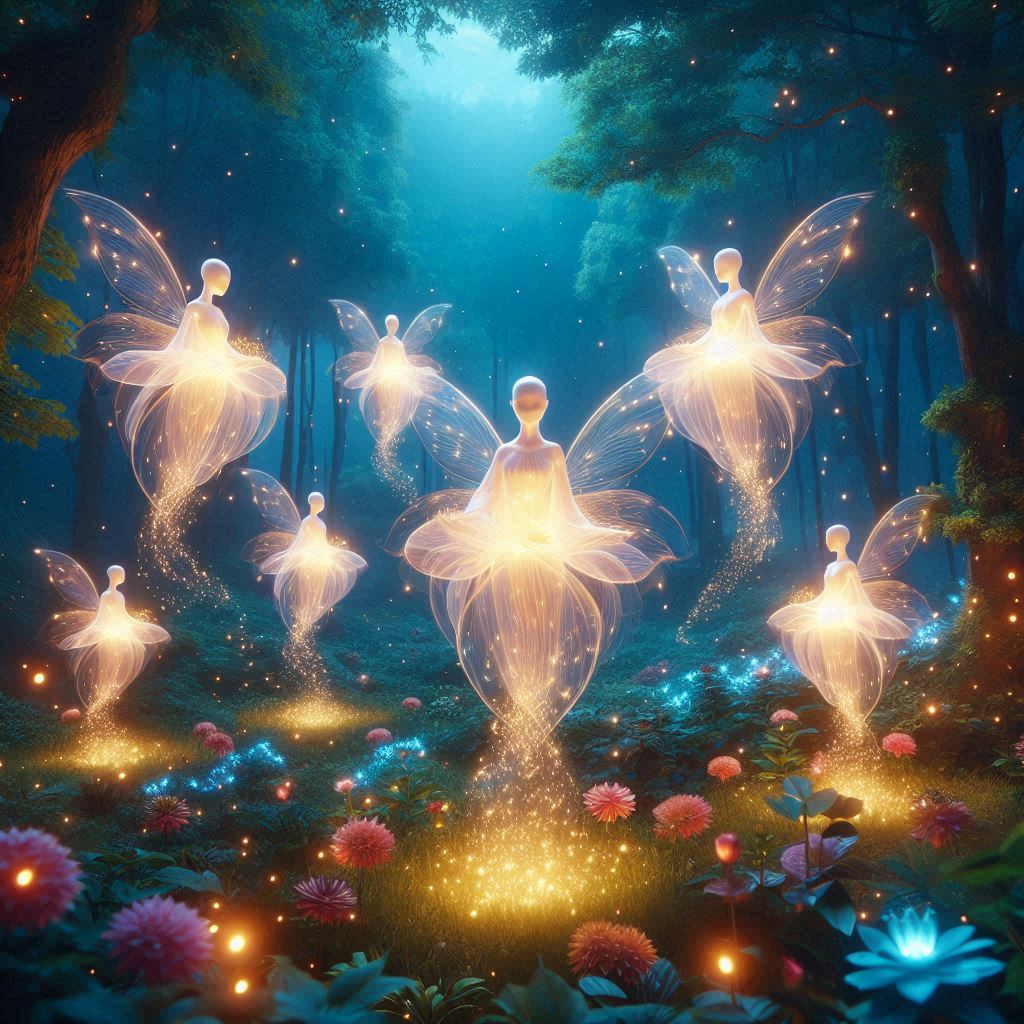Overview
Light elementals, often referred to as beings of pure energy and radiance, are spiritual entities associated with the elemental force of light. These beings are depicted across various cultures and spiritual traditions as manifestations of vitality, clarity, and the ethereal aspects of the natural world. They are believed to influence the energetic dynamics of environments, facilitating the flow of light energy that can have healing and purifying properties.
Understanding Light Elementals
1. Characteristics and Nature
- Ethereal and Radiant: Light elementals are characterized by their luminescent appearance and are often described as radiant beings made of light and color. They lack a fixed physical form, embodying the fluid and dynamic nature of light itself.
- Vibrational Beings: These elementals exist at high vibrational frequencies, making them more accessible through spiritual perception than physical senses.
2. Roles and Functions
- Energy Purification: Light elementals work to cleanse and purify the energies of a space or individual, dispelling darkness and negativity.
- Guidance and Enlightenment: They are thought to offer spiritual guidance, enhancing mental clarity, and fostering enlightenment and insight.
Cultural Significance of Light Elementals
1. Global Mythologies
- Mythological Depictions: Light elementals appear under various names in mythologies around the world, including light fairies, luminous deities, and celestial spirits. They are often associated with sacredness and divinity, due to their pure and untainted nature.
- Guardians of Sacred Sites: In many traditions, these elementals are considered guardians of energetically powerful places, such as ley lines and spiritual centers.
2. Symbolism in Art and Literature
- Light elementals are depicted in art and literature as symbols of hope, renewal, and spiritual awakening. Their imagery is used to convey the powerful transformative qualities of light.
- Inspiration: They inspire themes of transcendence, spiritual illumination, and the eternal struggle between light and darkness.
Engaging with Light Elementals
1. Meditation and Visualization
- Engaging with light elementals typically involves practices that focus on light visualization, meditation, and energy work. These practices can help attune individuals to the high vibrational energy of these beings.
- Light Meditation: Visualizing intense, pure light during meditation can invite the presence of light elementals, whose energy can aid in personal healing and spiritual growth.
2. Environmental Harmony
- Light elementals encourage harmony and balance in natural and human-made environments. Promoting the health of these environments can strengthen one’s connection to light elementals.
- Natural Light: Maximizing the presence of natural light in spaces can help attract and maintain the beneficial influences of light elementals.
3. Spiritual Practices
- Incorporating light-based elements into rituals, such as candles, bonfires, or reflective surfaces, can facilitate closer interactions with light elementals.
- Seasonal Celebrations: Many cultures celebrate the power of light during solstices and equinoxes, times when light elementals are believed to be most active and accessible.
Conclusion
Light elementals play a crucial role in the spiritual ecology by managing and manipulating the elemental energy of light. Their presence is associated with healing, purification, and spiritual enlightenment. By understanding and engaging with these luminous beings, individuals can enhance their spiritual practice and promote balance and harmony in their lives and environments. Engaging with light elementals not only enriches personal spiritual journeys but also contributes to the collective upliftment of energy and consciousness.

